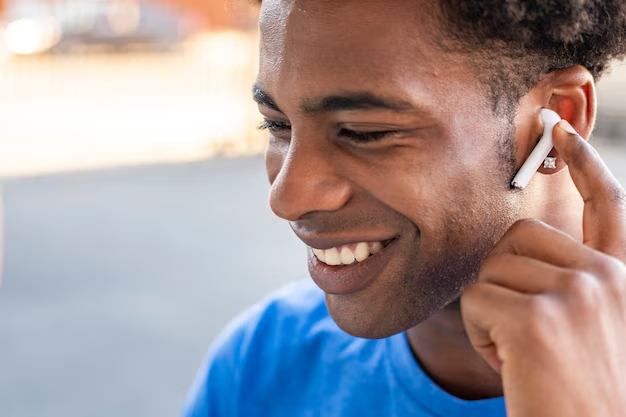Can AirPods Double as Hearing Aids? Here’s the Rundown You Need
In today's tech-savvy world, using everyday technology for alternative purposes is becoming increasingly common. One of these interesting adaptations is leveraging Apple AirPods as makeshift hearing aids. If you're curious about how AirPods can assist those with minor hearing difficulties, this article is your one-stop resource.
What Are AirPods?
Apple’s AirPods are wireless earbuds designed primarily for audio playback, calls, and voice commands. With their sleek design and Bluetooth connectivity, AirPods are a convenient tool for smartphone users. However, their potential to aid in hearing is a testament to their versatility.
AirPods and Hearing Assistance: The Basics
Modern technology has bridged many gaps, allowing devices like AirPods to offer more than what they were originally intended for. By employing them in conjunction with features like Apple’s Live Listen, AirPods can amplify sound for better perception, much like basic hearing aids.
What is Live Listen?
Live Listen is a feature on iOS devices that transforms your iPhone or iPad into a remote microphone. By placing your device near the source of sound, you can relay audio directly to your AirPods, thus amplifying the sound and aiding those with mild hearing challenges.
How to Set Up AirPods for Hearing Assistance
To use your AirPods as a hearing assistance device, you'll need to enable Live Listen on your iOS device. Here’s how to do it:
Ensure Compatibility:
- Your iPhone, iPad, or iPod touch should be running iOS 12 or later.
- You need AirPods, AirPods Pro, or AirPods Max.
Add Live Listen to Control Center:
- Go to Settings > Control Center.
- Tap Customize Controls.
- Add Hearing to Control Center.
Activate Live Listen:
- Connect your AirPods to your device.
- Open Control Center on your iOS device.
- Tap the Hearing icon.
- Select Live Listen and place your device near the sound source.
Limitations and Considerations
While using AirPods as a basic hearing aid can be beneficial for certain scenarios, it’s important to recognize the limitations and considerations associated with this setup:
- Limited Functionality: AirPods are not a substitute for professionally designed hearing aids in terms of function and customization.
- Battery Life: Active use of Live Listen can drain AirPod batteries faster, requiring more frequent recharging.
- Environment Suitability: Noises in environments like crowded areas may still impede hearing clarity despite amplification.
Alternatives to AirPods for Hearing Support
While AirPods can be useful, there are alternatives that might offer a better fit for those with specific hearing needs.
Hearing Assistive Devices
For those requiring regular hearing support, dedicated devices are crafted to address individual hearing deficiencies with precision.
Specialized Apps
Several smartphone apps can also enhance hearing capabilities. These apps can adjust sound levels and frequencies, offering a customized hearing experience.
Key Benefits of Using AirPods as Hearing Aids
Despite alternatives, AirPods offer distinct advantages:
- Convenience: Most users find AirPods incredibly user-friendly due to their seamless integration with Apple devices.
- Cost-Effectiveness: For individuals with mild hearing issues, using AirPods might be a cost-effective interim solution.
- Multi-functional Use: AirPods can be used for both audio playback and hearing assistance without needing separate devices.
Consumer Tips for Maximizing AirPods’ Hearing Capacity
- Check for Software Updates: Ensure your iOS devices and AirPods are updated to utilize the latest features and improve performance.
- Practice Good ear Hygiene: Keeping the earbuds clean ensures sound flows clearly.
- Experiment with Placement: Try different placements for your iOS device when using Live Listen to capture the best sound quality.
📝 Quick Summary: Enhancing Hearing with AirPods
- 📱 Compatibility Check: Ensure the device supports iOS 12 or later.
- 🎧 Control Center: Add the Hearing function to enable Live Listen.
- 🔋 Battery Awareness: Be mindful of usage time as Live Listen drains batteries.
- 🔊 Sound Source Placement: Adjust your device's position for optimal hearing.
Moving Forward: Empowering Everyday Technology
AirPods bring more to the table beyond mere music playback. In innovative ways, everyday gadgets are reshaping how we address auditory needs, championing accessibility and convenience. While they offer practical support to those with mild hearing challenges, consulting hearing care professionals for a comprehensive solution remains indispensable. With technology evolving rapidly, the future holds exciting possibilities for even more dynamic solutions in personal audio and hearing assistance.

Related Topics
- a Plus Hearing Aid Centers
- a Real Pain Showtimes Near Centerville
- Are Airpods Bad For Your Ears
- Are Apple Second Generation Airpods Hearing Aids
- Are Audien Hearing Aids Just Amplifiers
- Are Costco Hearing Aids As Good As Others
- Are Costco Hearing Aids Good
- Are Hearing Aid Domes Interchangeable
- Are Hearing Aid Subscriptions Worth It
- Are Hearing Aid Tax Deductible